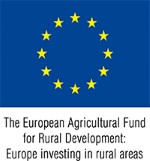Contact
Peter Udén
peter.uden@slu.se
018-67 20 58
The purpose with this developing project is to develop a sensor to monitor milk urea N (MUN) concentrations of individual cows to enable diet adjustments.

Partners of this development project are from Department of Animal Nutrition and Management, SLU, the Department of Physics, Chemistry and Biology (IFM), Linköping University (LiU), Växa Sverige and Yttergärde Lantbruk AB. LiU will contribute knowledge in biosensors, bioelectronics, biointerfaces and bioengineering. Expertise of SLU partners are in farm sensor applications, urea metabolism and chemical analysis. Växa and Yttergärde Lantbruk AB are experts in dairy cattle nutrition and production, dairy production advisory and automation.
By monitoring individual cow milk urea concentrations it should be possible to adjust diets to reduce feed costs and/or increase milk production and to reduce nitrogen (N) emission to the environment.
Develop a sensor to monitor milk urea N (MUN) concentrations of individual cows to enable diet adjustments.
Cows excrete nitrogen in the form of urea in the urine, and a proportion is also found in the milk. Excretion in the milk reflects the excretion in urine, which in turn is affected by nutrition. As milk, unlike urine, is easily accessible for measurements, Växa Sverige introduced milk urea (MU) recording in 1993 as a tool for adjusting dairy cow rations to optimize N efficiency relative to cow performance and environmental loads. Milk urea concentration is presently measured every another day in bulk milk at farm level in most dairy cooperatives and monthly at individual cow level in the milk recording system. Measurements at herd level does not allow adjustment of individual cow rations (e.g. concentrate levels and/or composition). Individual cow recordings are presently not reliable and are performed too infrequently to be useful for ration adjustments. Individual animal MU responses offer good opportunities for feedback, but affordable, reliable and tractable solutions are presently lacking.
Diet optimization can lower feed costs as protein supplements are expensive and often used excessively by dairy farmers. In addition, feed optimization may suggest novel feeds and new combination of feeds, and MU may in such situations serve as a valuable indicator of unbalanced nitrogen/protein feeding. By avoiding too high blood concentrations of urea, animal health and fertility can be improved. These combined effects can improve farm economy and, hence, competitiveness of Swedish dairy farmers internationally.
By monitoring individual MU concentrations in cows, it will be possible to minimise urea excretion through feed adjustments. Urea from the urine is rapidly converted to ammonia during storage and when spreading slurry on the fields, it either evaporates or ends up as water soluble nitrogen in waterways. This has well-known consequences for the ecosystems of our aquatic environments. Ammonia is also oxidized by microorganisms during storage and converted to N2O with a greenhouse gas equivalent of nearly 300 times that of CO2.
The market consists primarily of dairy farmers in Sweden but also worldwide. Farmers and/or advisors can use a sensor integrated in a hand-held analyser in all types of milking systems. Applied to automatic milking, manufacturer could integrate the sensor into their own system. 'Växa Sverige' uses the Nordic Feed Evaluation system (NorFor) and the 'IndividRAM' platform for diet formulation, which includes economic optimization. Present MU records are used by the system for an approximate 100000 dairy cows today but more reliable and frequent MU readings would benefit the NorFor system.
Peter Udén
peter.uden@slu.se
018-67 20 58